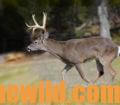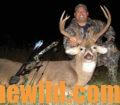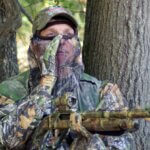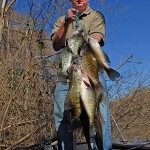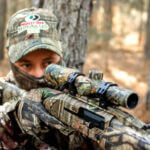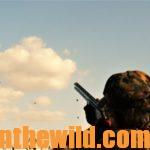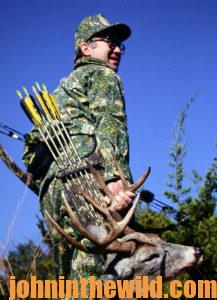 Editor’s Note: Since the days of Robin Hood and William Tell, hundreds of years have passed, millions of deer have been hunted, and thousands of hours have been invested in bowhunting technology. Archers today may feel a kinship to a particular kind of bow that’s been developed through the years, with their equipment reflecting their bowhunting heritage. The bowhunter is not simply a hunter, but is a stylist who matches his bow to his style of hunting, to his philosophies and beliefs of what bowhunting should be, and to what he feels is the best way for him personally to take deer. Bowhunting has become so diversified as a sport, that today the archer has many different options as to the kind and style of bow he’ll select, and the way he’ll hunt. What kind of bow is best for you, and what type of hunting will most satisfy you? This week, we’ll look at several different kinds of bows, their advantages and disadvantages, the styles of hunting they represent, and the types of archers who choose them.
Editor’s Note: Since the days of Robin Hood and William Tell, hundreds of years have passed, millions of deer have been hunted, and thousands of hours have been invested in bowhunting technology. Archers today may feel a kinship to a particular kind of bow that’s been developed through the years, with their equipment reflecting their bowhunting heritage. The bowhunter is not simply a hunter, but is a stylist who matches his bow to his style of hunting, to his philosophies and beliefs of what bowhunting should be, and to what he feels is the best way for him personally to take deer. Bowhunting has become so diversified as a sport, that today the archer has many different options as to the kind and style of bow he’ll select, and the way he’ll hunt. What kind of bow is best for you, and what type of hunting will most satisfy you? This week, we’ll look at several different kinds of bows, their advantages and disadvantages, the styles of hunting they represent, and the types of archers who choose them.
Targets:
Most people want some type of target to practice shooting. You can buy targets of all varieties that can stop and hold broadheads or field points, but many hunters use bales of hay and paper targets. Most novices want to start with a deer target; however, many bowhunting teachers recommend that they choose paper bullseye targets. Having a well-defined spot at which to aim helps them learn more quickly how to hit that place than if they choose a deer target and start off looking at the whole animal. Paper targets and a bale or two of hay are also the least-expensive targets you can buy.
use bales of hay and paper targets. Most novices want to start with a deer target; however, many bowhunting teachers recommend that they choose paper bullseye targets. Having a well-defined spot at which to aim helps them learn more quickly how to hit that place than if they choose a deer target and start off looking at the whole animal. Paper targets and a bale or two of hay are also the least-expensive targets you can buy.
Sights:
Many people who buy bows today are putting some type of sight on them. The beginner may learn more from a pin sight that can be adjusted horizontally and vertically. The best way to sight these pins in is to begin with the top pin and shoot it at the target. There’s a very-simple rule of thumb to follow when sighting in with pin sights – you move the pin toward the mistake. Start off at 15 yards. If you miss the target, then move the pin toward the direction the arrow flew. For example, if the arrow hit low and to the right, move the pin down and over to the right. Once you have the first pin sighted in, set the second pin straight under the first pin, and you should have your left and right adjustments correct then simply adjust for elevation. The further you back up from the target, the more you lower the second pin.
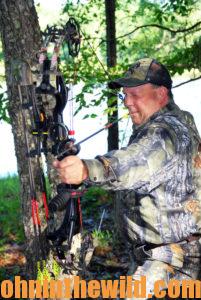 Clothing:
Clothing:
Pants probably are one of the most-overlooked parts of the bowhunter’s equipment. Although six-pocketed pants are worn by gun hunters, many bowhunters prefer four pockets. When stuffed full of hunting gear, side pockets often will get in the way of your bow when you’re walking, or when you’re standing in your stand preparing for the shot. If you need more than four pockets to carry your equipment, consider wearing a backpack. The same is true for shirts and jackets with bulging pockets. Pockets are nice, but they get in the bowhunter’s way. Many bowhunters like relatively tight-fitting shirts and pants with few pockets. No matter what type jacket or pants you wear, try to eliminate buttons, which are noisy and can catch your bowstring.
Choosing the right hat is extremely important to the bowhunter. There’s nothing worse than pulling the string of your bow back and having it touch or knock your hat off because the cap’s bill is too long. If you don’t have a short-billed cap, use a hat with no bill or wear the hat backwards when you’re ready to shoot.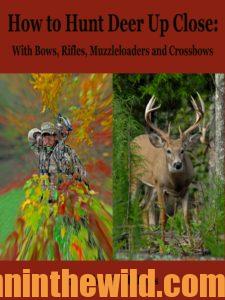
The novice bowhunter should choose his tackle from an archery dealer who will spend the time not only to match the tackle to the hunter, but also to teach him how to use the gear he’s bought. A reputable dealer can help the beginner with any problems he may have, and he’ll enjoy the sport of bowhunting a lot more than if he tries to order equipment out of a catalog or walk into a store and buy what he thinks he needs without sound, professional advice. Bowhunting is an exciting and challenging sport, but to be successful at it, the bowhunter must first have equipment that’s right for him.
To learn more about hunting, check out John E. Phillips’ book, “How to Hunt Deer Up Close with Bows, Muzzleloaders and Crossbows” in Kindle, print and Audible versions at http://amzn.to/11dJRu8

